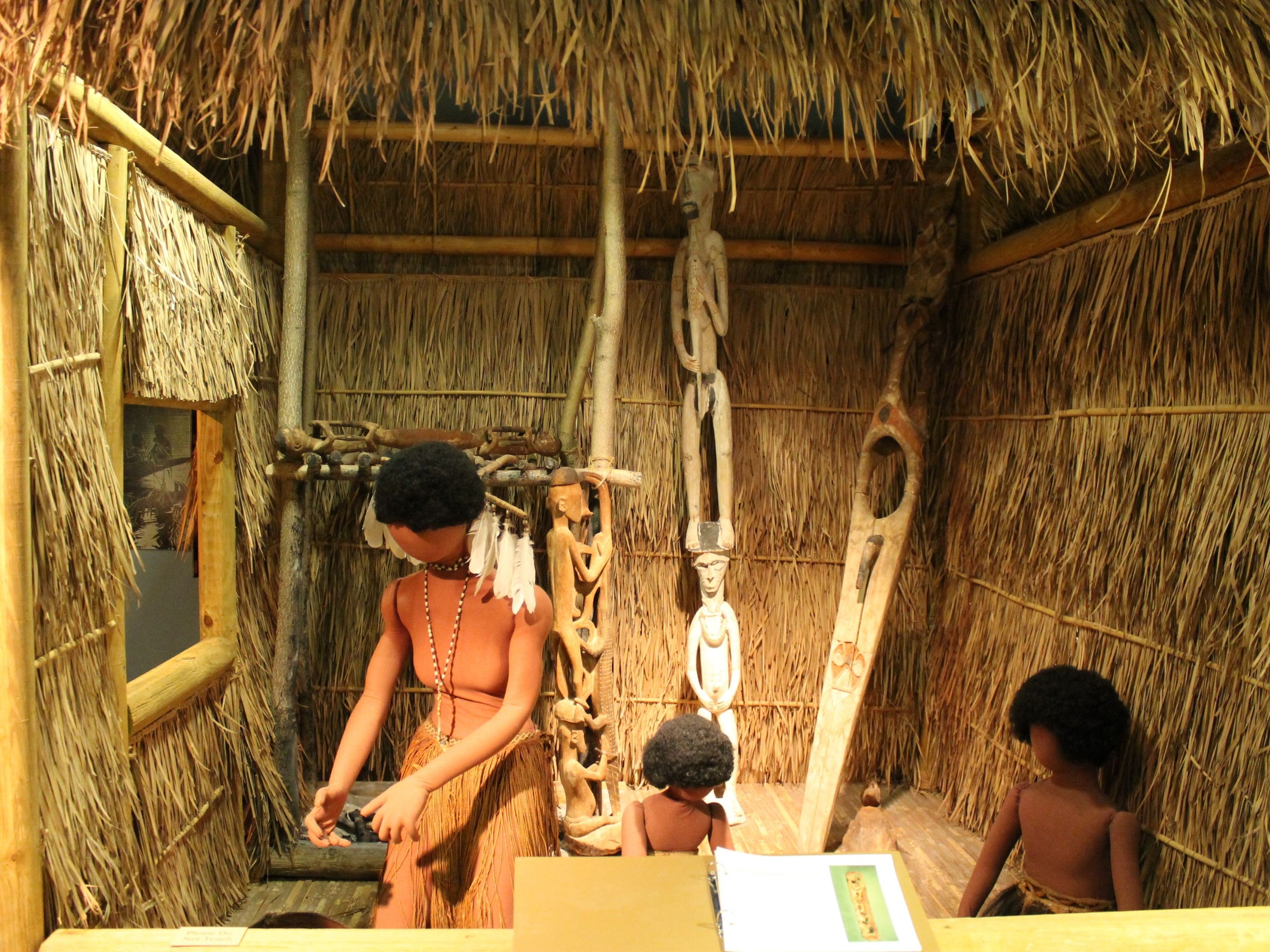The Symbolism of Fertility
Bis Pole
The power of giving life is deeply embedded into the symbolic and ritualistic experience of the Asmat culture. Fertility is very important to the Asmat as their population has a high infant mortality rate. Most of their carved objects incorporate designs associated with fertility. Rituals, such as the Je Ti feast, adolescent rites of passage, head hunting, and the symbols carved into Bis poles also incorporate fertility components. Asmat culture weaves together the themes of food, sexuality, and headhunting.
The Downing Collection of Asmat Art
2001.10.219 Lowell D. Holmes Museum of Anthropology
Ancestor Figure
Ancestors figures are very similar to Bis poles, but are on a smaller scale. This ancestor pole reflects their integration of ritual and fertility. The top male figure is holding a crocodile, while the bottom female figure is pregnant and has a human jaw necklace. The ancestor pole depicts the parents of the owner. The mother in the pole is pregnant with child, which will promote the birth of a healthy baby in the family.
The Downing Collection of Asmat Art
2001.10.248 Lowell D. Holmes Museum of Anthropology
Omu
The Omu is a symbol of the ancestors and is made so that the ancestors' spirit will enter the Omu and bless the village. They are always made in pairs. When the village elders decide that a pair of Omus are to be made, a feast house called a Je Ti is made. The best carvers are sent to carve the Omus secretly in the men's house and when ready they are taken to a specially prepared feast house.
During the night the men rub against and touch the penis of the Omu to promote fertility. The next day women come freely, or are dragged by their husbands, to touch the Omu. Children are also forced to touch the Omu so that everyone in the village will come in contact with the Omu and gain some of its fertility.
The Downing Collection of Asmat Art
2001.10.817 Lowell D. Holmes Museum of Anthropology
An- Sago Worm Bowl
The An is identified with the female reproductive organ. These bowls usually hold sago worms, which are the larval forms of the Capricorn beetle. Since sago worms and brains are thought to resemble sperm, this is a significant symbol of fertility as this represents conception.
The Downing Collection of Asmat Art
2001.10.178 Lowell D. Holmes Museum of Anthropology
Bowl
Bowls are both everyday and ceremonial items for the Asmat. They hold food, paint during carving, and other items. These are different than the An, which is a special ceremonial bowl carved from a piece of the sago palm. The bowl in this picture is carved from one of the several hardwood trees in the Asmat area.
The Downing Collection of Asmat Art
2001.10.132 Lowell D. Holmes Museum of Anthropology
Skull
This carved wooden skull now takes the place of the preserved human skull that was a part of headhunting. When skulls were taken, they were painted and decorated. These skulls are used in the initiation of young adolescents who have the skull placed between their legs. Then the initiate is forced to constantly look at the skull. A day or two later the initiate and close family members board canoes and sail westward, toward the sea where the ancestors are thought to live. On the way the initiate grows weaker and weaker until he needs help. He is then immersed with the skull in water and gains his strength back. After this experience he is an adult.
The Downing Collection of Asmat Art
2001.10.943 Lowell D. Holmes Museum of Anthropology


